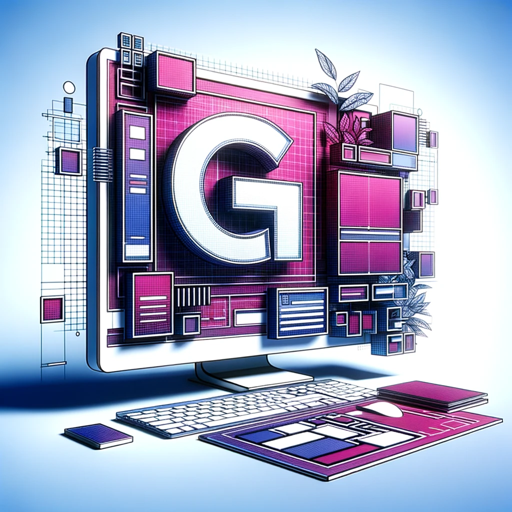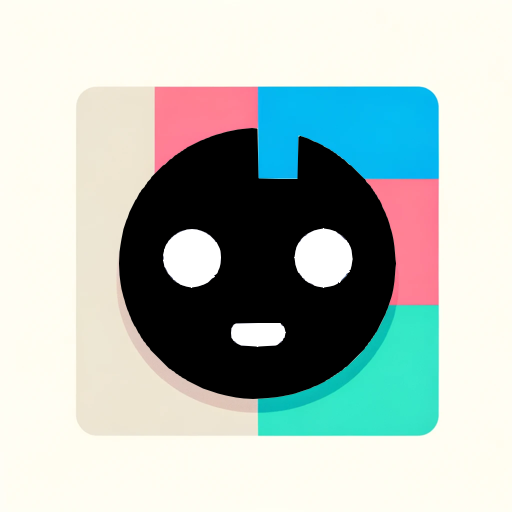Design Dynamo-AI-powered design creation tool
Unleash Creativity with AI-Powered Design
Activate Design Dynamo
Related Tools
Load More
Brand Site Architect
Assists in creating brand websites with detailed page, layout, and design suggestions.
Design Wizard
Ready-made Screens, Layouts, and Flux Strategies.

Data Dynamo
A friendly data science coach offering practical, useful, and accurate advice.

Dynamo & Revit API Helper
Assists with BIM automation using Dynamo, Revit API with Python and C#
System Dynamics
AI System Dynamics guidance and assistance.

D2 Flowchart Generator
Expert in creating structured flowcharts with succinct labels and clear organization. Use this link to generate the chart: https://play.d2lang.com/
20.0 / 5 (200 votes)
Introduction to Design Dynamo
Design Dynamo is a versatile digital tool optimized for advanced design generation, image manipulation, and creative project ideation. Its primary purpose is to assist users in visualizing and creating unique, high-quality designs tailored to their specific needs, whether for branding, marketing campaigns, or artistic endeavors. The platform leverages sophisticated image generation algorithms, enabling users to produce customized visuals with a high degree of control over variables like aspect ratio, stylization, chaos, and weirdness. Design Dynamo’s key feature is its ability to take specific input parameters (such as prompts and style adjustments) and generate corresponding visual designs. It also offers detailed feedback and design advice, which is ideal for refining projects. For example, a marketing agency could use Design Dynamo to quickly generate poster designs for a new product campaign, allowing them to experiment with various styles and layouts before choosing the most effective one. By tweaking specific parameters, they can ensure the visual output aligns with the brand’s identity and campaign goals.

Key Functions of Design Dynamo
Advanced Image Generation
Example
A user describes a futuristic cityscape in a cyberpunk style with towering neon-lit buildings and flying cars. Design Dynamo uses these inputs to generate an image that closely matches the description, allowing for further customization with parameters like aspect ratio (--ar 16:9), chaos (--chaos 50), and stylization (--stylize 800).
Scenario
A graphic designer working on a science fiction book cover uses this function to generate an original concept for the book’s artwork, saving hours of manual illustration work.
Design Feedback and Critique
Example
A user uploads a logo design and requests feedback on the color balance and typography. Design Dynamo provides detailed critique, suggesting adjustments to improve the contrast and font legibility while ensuring alignment with the brand’s core values.
Scenario
A small business owner developing a new logo for their brand seeks expert advice on their draft design. Design Dynamo's critique helps refine the design to ensure it’s versatile and memorable.
Pattern Creation and Tiling
Example
A textile designer needs to create a seamless floral pattern for fabric printing. By inputting floral design elements and using the 'tile' feature, Design Dynamo generates a perfectly repeating pattern that can be used for fabric production.
Scenario
In the fashion industry, a pattern designer utilizes this function to produce a seamless pattern for a custom clothing line, ensuring that the design can be scaled across various fabric dimensions without losing quality.
Ideal Users of Design Dynamo
Graphic Designers and Artists
Design Dynamo offers a wide range of tools for creative professionals who need to generate, refine, and iterate on visual content. Graphic designers and digital artists benefit from the tool’s ability to produce unique, customized designs based on their input. The control over stylization and chaos levels allows them to experiment with artistic expression while maintaining professional quality. This group can use the tool for logo creation, poster design, branding assets, and more.
Marketing and Advertising Teams
Marketing and advertising professionals can leverage Design Dynamo to quickly produce visual assets for campaigns, social media, or presentations. The ability to generate images aligned with specific themes or messages makes it a valuable tool for crafting targeted advertisements and promotional materials. By tweaking parameters like aspect ratio or introducing unique visual styles, they can create attention-grabbing content that stands out in competitive markets.

How to Use Design Dynamo
1
Visit aichatonline.org for a free trial without login, also no need for ChatGPT Plus.
2
Familiarize yourself with the main commands like 'Generate Image,' 'Provide Design Advice,' and 'Critique My Design.' These commands activate different features depending on your design needs.
3
When generating an image, provide specific prompts, including details like subject matter, aspect ratio (e.g., --ar 16:9), style, and optional elements such as --chaos or --seed for more tailored results.
4
For advanced customization, use post-generation commands like 'Upscale' to enhance resolution, 'Zoom' to focus on certain parts of the image, or 'Tile' to create seamless patterns.
5
Make sure to explore feature combinations and experiment with parameters (e.g., --stylize, --weird) for creative, professional-quality results.
Try other advanced and practical GPTs
Million Dollar Sales Page
AI-Powered Sales Pages That Convert

STM32 Solver
AI-powered STM32 coding assistant

Strength and Conditioning GPT
Your AI-powered fitness coach.

Ohho AI-Retro character
AI-powered art creation and guidance.

Character Sheet AI
AI-powered character creation made easy
Blockchain Beacon
AI-powered Web3 content tailored for you

Image Enhancer
AI-powered image enhancement and upscaling.

四コマ漫画メーカー
AI-powered four-panel comic creation

Coloring Pictures(ぬり絵デザイナー)
Create simple, fun coloring pages with AI.

IMAGES PROMPT
AI-powered detailed image prompt generator.

Cite GPT
AI-powered citation generation and management.

Cite Scholar
AI-powered citation generation made easy.

- Graphic Design
- Concept Art
- Marketing Campaigns
- Poster Design
- Product Prototypes
Design Dynamo Q&A
What types of images can I generate with Design Dynamo?
Design Dynamo can create a wide variety of images, from concept art and posters to product designs and social media graphics. You can specify exact styles, subjects, and image ratios to fit your needs.
Can I modify an image after it’s generated?
Yes, Design Dynamo allows post-generation edits. You can upscale an image for better resolution, zoom into specific areas for a detailed view, tile the image for patterns, or even tweak the original image using additional prompts.
How can I make my images unique?
By using the --chaos and --weird parameters, you can introduce a level of unpredictability or artistic flair to your images. Adjusting these parameters creates more unconventional, creative designs.
What features make Design Dynamo suitable for professional design work?
Design Dynamo offers advanced controls like aspect ratio adjustments, stylization settings, seed consistency, and post-generation editing features (e.g., zoom and upscale), making it ideal for professional and precise designs.
Is there a limit to the number of images I can generate?
No, you can generate and modify as many images as you want, though optimizing your prompts for precision will reduce the need for repetitive trials.